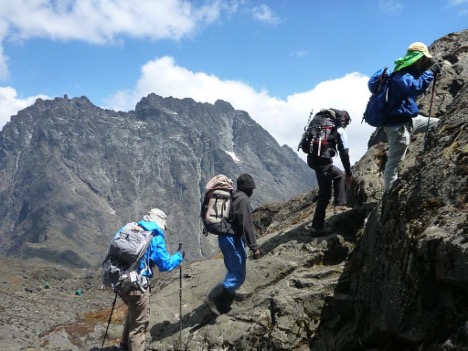
Early in my teaching career, I was filled with boundless enthusiasm. I wanted every student to conquer the mountain of learning alongside me. I spent evenings crafting lessons, offering extra help after school, and reteaching concepts to those who seemed lost. Soon, my classroom resembled the base camp of Mount Rwenzori, overflowing with students seeking clarity. Exhausted and overwhelmed, I questioned my approach. “Could it be true?” I thought, “Some students just can’t GET IT?”
This disheartening thought mirrored my own experience as a student. Certain classes felt like a relentless uphill climb, leaving some of my friends gasping for breath and eventually giving up. The pressure to keep pace was immense. I craved a teacher who saw the different paths each student needed to take.
This realization ignited a fire within me. There had to be a better way! The answer came in the form of differentiated instruction. I love the analogy used in the TTT course module on Differentiating instruction, the analogy of climbing a mountain. Imagine we are climbing Mountain Rwenzori, the second-highest mountain in East Africa, also known as the Mountains of the Moon because of its snow-capped peaks and beautiful scenery. Its highest peak is called Margherita. Many people travel from all over the world to climb and get to the top. There are guides who take the mountain climbers to the top of the mountain. Many times, they have mastered the routes, knowing where to take breaks and how to motivate the climbers based on their abilities.

There are also different routes that can be taken, and they may take different days, from 4 to 12 days depending on one’s fitness level. Those that take the shorter route are usually very steep, shorter, and more challenging, requiring a high level of fitness, while those that take longer are less steep, longer, and less challenging, requiring people who could be less fit but still want to have the experience of getting to the beautiful peaks of Mountain Rwenzori. Regardless of the path chosen, the goal is to get to Margherita. The guides have to find a way of getting the mountain climbers to the goal.
This is what we do as teachers: provide different paths for our learners to reach the Margherita, which is the lesson objective. We need to constantly ask ourselves, “How do I get all my learners to Margherita regardless of their abilities? How do I challenge them? How can I cheer them on? How do I reach them to the objective?” Unlike in mountain climbing, the teacher finds ways of doing this in the same classroom which in essence is differentiated instruction. As a teacher, I became the guide, equipping students with the tools and strategies they needed to navigate their own unique path.
Differentiation wasn’t magic, but it required a specific skill set. Planning became paramount. I envisioned the needs of each student, crafting activities for those who craved a steeper, more challenging climb (enrichment) and for those who needed a longer, more gradual ascent (review and practice). Grouping strategically allowed me to provide targeted support, ensuring no student felt lost on the trail.
Classroom management, a major concern for many teachers, transformed with clear instructions. When students understood the expectations and their individual learning journeys, the classroom hummed with focused activity – a testament to the power of personalized learning.
Climbing the mountain of learning with differentiated instruction isn’t easy. It requires dedication and effort. But the reward? Seeing every student reach the summit, with a sense of accomplishment and a thirst for further exploration – that’s the magic every teacher strives to create. This journey transformed my classroom from a crowded base camp into a thriving hub of diverse learners, all reaching for the peak, together.
Flavia is an educator with a passion for teacher training and school leader development. Flavia has been a TTT partner since 2020.